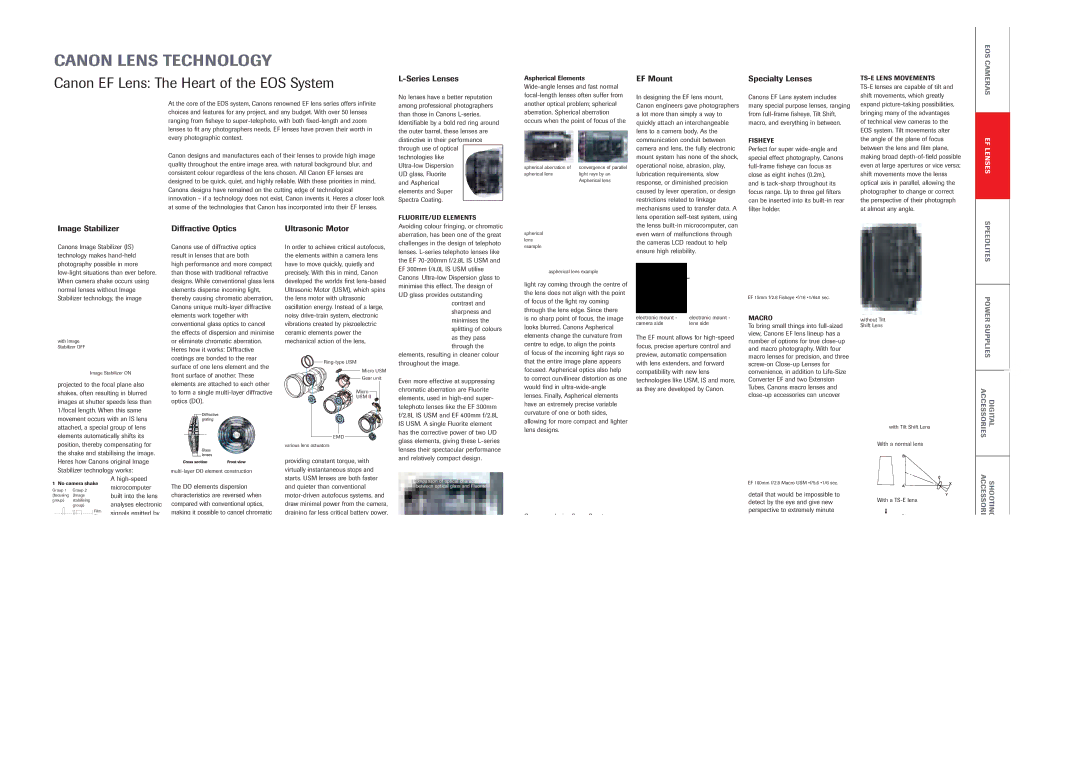Digital Camera Lens specifications
Canon has firmly established itself as a leading brand in the world of photography, and its digital camera lenses play a crucial role in delivering exceptional image quality and versatility. These lenses, compatible with Canon's range of digital cameras, feature advanced technologies and characteristics that cater to both amateur and professional photographers.One of the standout features of Canon lenses is their advanced optical design. Many Canon lenses utilize Ultra-Low Dispersion (UD) glass elements and aspherical lens elements, which significantly reduce chromatic aberration and distortion. This ensures sharp, high-contrast images with minimal color fringing. The use of Super Spectra coating further enhances light transmission while minimizing ghosting and flare, allowing photographers to capture stunning images even in challenging lighting conditions.
Canon offers a diverse lineup of lenses, including prime, zoom, macro, and telephoto options. Prime lenses, known for their simplicity and wide apertures, are especially popular among portrait photographers for their ability to create beautiful bokeh. Zoom lenses provide flexibility, allowing users to easily transition between different focal lengths without changing lenses. This is ideal for dynamic shooting environments where every second counts.
In recent years, Canon has also integrated advanced autofocus technologies into its lenses. The Dual Pixel autofocus system, which is found in many of its newer lenses, enables fast and accurate focusing, making it easier to capture moving subjects. Additionally, Canon's STM (Stepping Motor) lenses provide smooth and silent autofocus performance, which is particularly beneficial for video recording.
Another key characteristic of Canon lenses is their build quality. Many of them are designed to withstand the rigors of professional use, featuring weather-sealed constructions that protect against dust and moisture. This durability ensures that photographers can confidently shoot in various weather conditions without worrying about damaging their equipment.
Canon also places a strong emphasis on compatibility and innovation through its RF lens mount system. Introduced with the Canon EOS R series, the RF lenses utilize a larger diameter and shorter flange distance, which allows for more creative possibilities and design flexibility. This innovation has led to the development of cutting-edge lenses with enhanced performance that complement the latest mirrorless camera technologies.
In conclusion, Canon digital camera lenses are a testament to the brand's commitment to excellence in photography. With their advanced optical performance, innovative autofocus technologies, and robust build quality, Canon lenses are designed to meet the demands of photographers at every skill level, empowering them to capture their vision with precision and clarity. Whether you’re exploring landscapes, photographing events, or capturing intimate portraits, Canon lenses offer the tools necessary to elevate your photographic experience.

